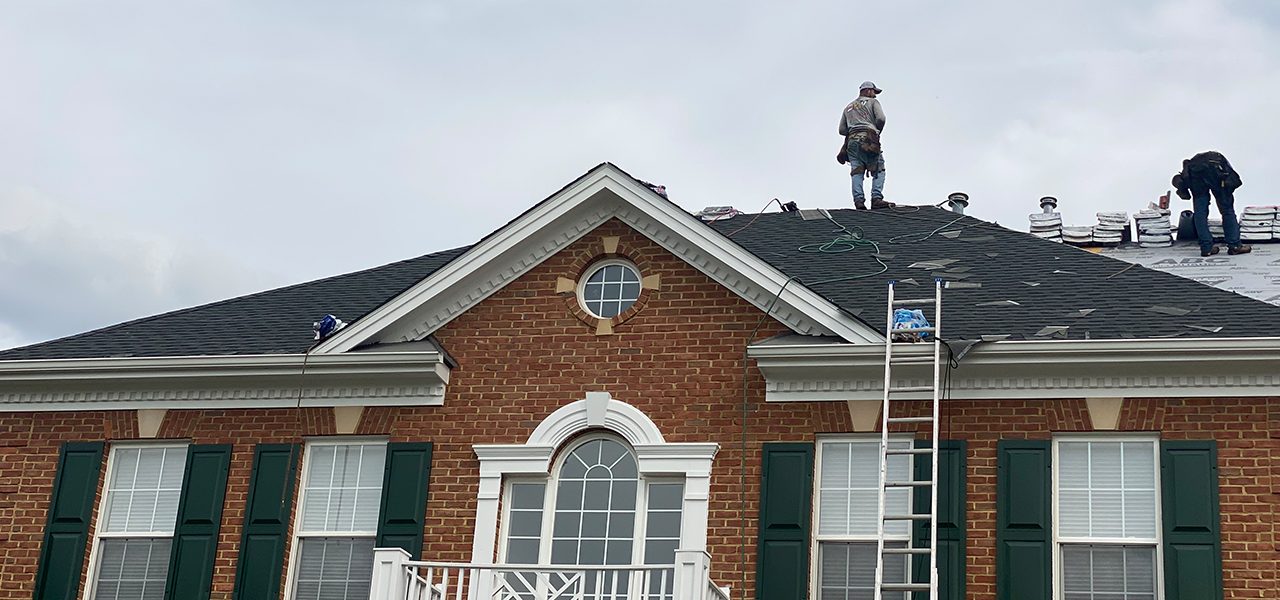Contrary to popular belief, maintaining your home’s roof doesn’t just mean keeping up with changing seasons and weather conditions. Doing continuous roof maintenance can help you avoid potentially costly repairs later on.
Here are some of the most important steps to maintain your roof:
1- Clean the gutters to make sure water doesn’t pool up on your roof
Gutters are an often-forgotten part of maintaining a home, but they serve more than one purpose. Just like how you wouldn’t want puddles forming around your ankles while you work in the yard, excess water around your gutters is something that should be avoided because it puts more weight onto all the shingles, which could cause damage over time. To clean out the gutters every few months, purchase a leaf blower and use it to clear out any debris stuck inside of them.
2- Remove any trees that are close enough to touch your roof
Since most roofs aren’t flat, you’ll often find that water gathers in the valleys or near the edges when it rains. If you have any tall, dense bushes or trees right next to your house–or worse yet, on top of it, they’re going to prevent this runoff from easily trickling away because their leaves block rainwater from seeping through. To get rid of these pesky plants without harming them, apply 1/4 cup salt dissolved in 1/4 gallon water at ground level where they meet your foundation. The high concentration will slowly dehydrate them so you can cut off the leaves without damaging the trunks.
3- Inspect the roof for missing shingles or holes in the tar paper and replace them as needed
Missing, cracked, or damaged shingles are another common problem that leads to damage, but these easy-to-spot mistakes also happen to be some of the easiest ones to correct. Missing shingles should be replaced immediately as they allow rainwater to enter your attic space. While small cracks and dings don’t cause any substantial damage by themselves–make sure you get up there and patch them before water starts seeping through over time. And finally, if you notice any punctures in your home’s sheeting (tar paper), it’s a must to get on a ladder and replace them with fresh materials immediately.
4- Keep an eye out for leaks around windows, vents, and chimneys – these can cause problems with your home’s insulation
It might seem like there are too many things that can go wrong with maintaining your roof, but one of the biggest issues actually comes from the inside! In between shingles or tar paper, you usually have some sort of attic ventilation system in place made from wood or aluminum that provides enough airflow into your attic space to keep it cool during warmer months without letting in any moisture. But when this vent is punctured by a nail or sticks improperly underneath layers of sheeting material, it allows rainwater to seep through onto your insulation, which can eventually lead to mold growth. Therefore, it’s important to always keep an eye out for leaks around windows, vents, and chimneys. Otherwise, you’re leaving your home vulnerable to the elements.
5- Check for signs of wear on shingle granules (they should be deep black)–if they’re light brown, it’s time to replace them
Another good indicator for maintaining your roof is needed comes from looking at its shingles! Shingles are made from asphalt and feature a layered design consisting of gravel and fiberglass that prevents moisture from seeping into your attic space and breaking down the materials inside. When this outer coating erodes away, water starts soaking through the asphalt itself instead. Since the asphalt is designed to protect against this from happening in the first place, you’ll eventually start seeing leaks around your home. To avoid these problems, inspect all your shingles each season to see if their granules have worn away–when 50% or more are gone, it’s time for a fresh new layer.
6- Replace worn out flashing around vent pipes or chimneys so water doesn’t seep into your attic space
Flashing is another common roofing component that you can go a long time without ever maintaining, but it’s also one that needs attention when necessary to prevent leaking. At vents and chimneys, where multiple roofs meet at angles near 90 degrees, you should add flashing made from aluminum or galvanized steel to keep water from traveling underneath the shingles. Make sure you inspect these areas very carefully for any gaps or cracks, since that’s where water seeps in most often!
We hope these tips on how to maintain your roof will help you identify potential roofing problems that may cause additional damages to your home. You can apply these tips for how to maintain your roof at any time of the year but be extra careful when maintaining your home’s roof in the winter since the materials are more brittle.
If you ever need any help with your roofing maintenance, call Fab Build Pro today!



